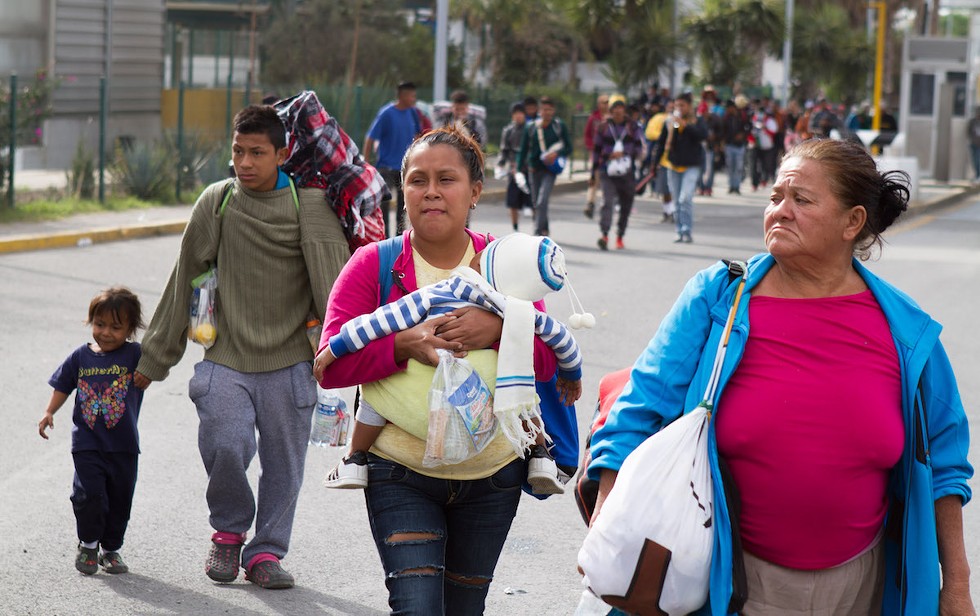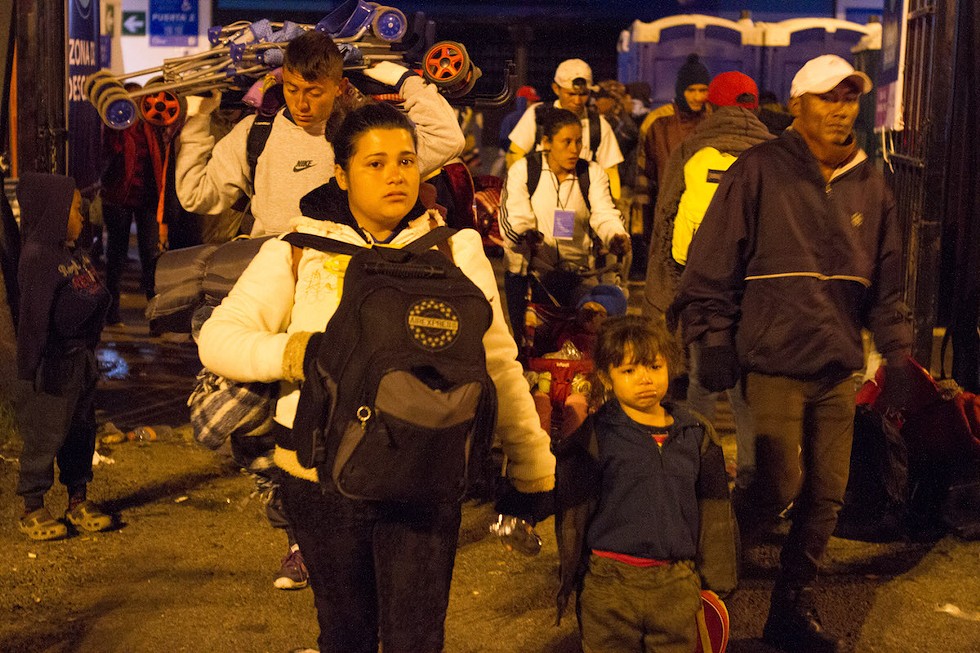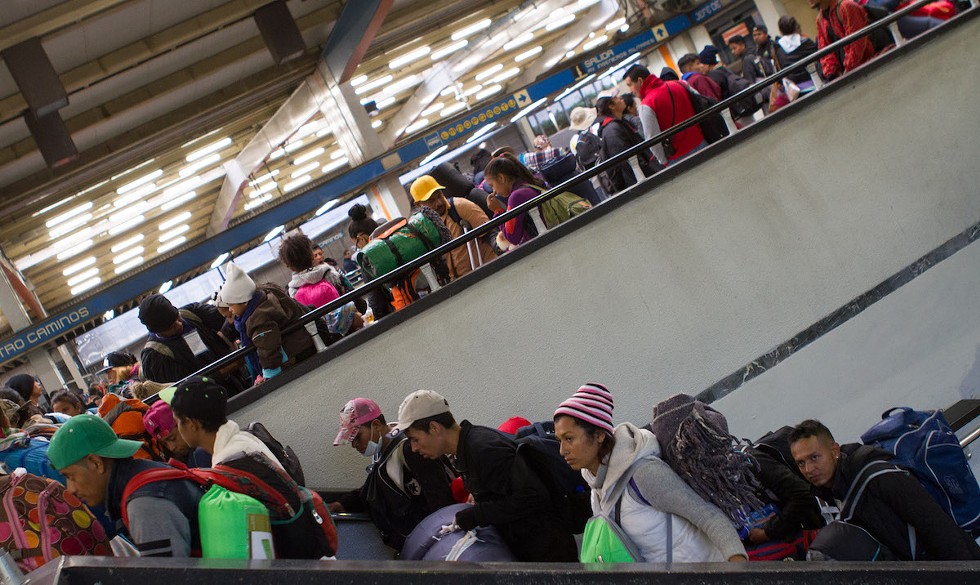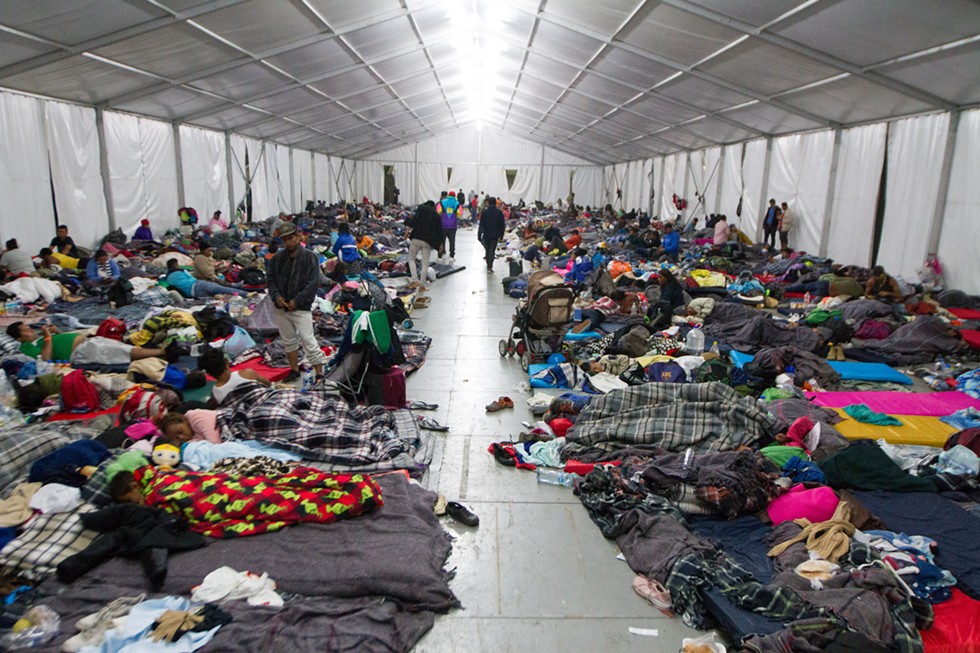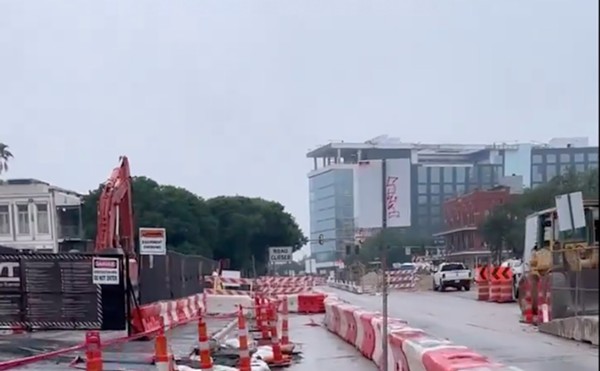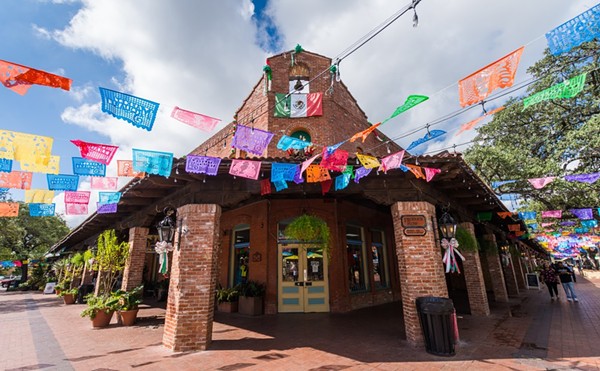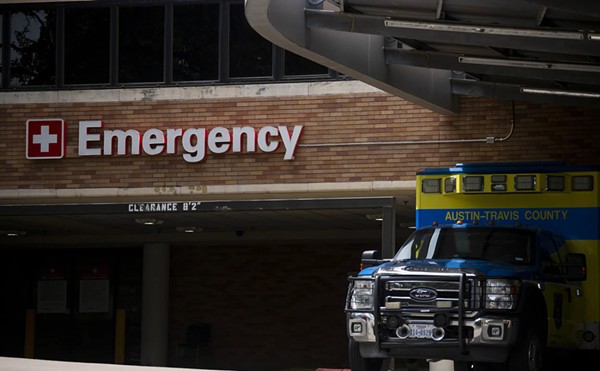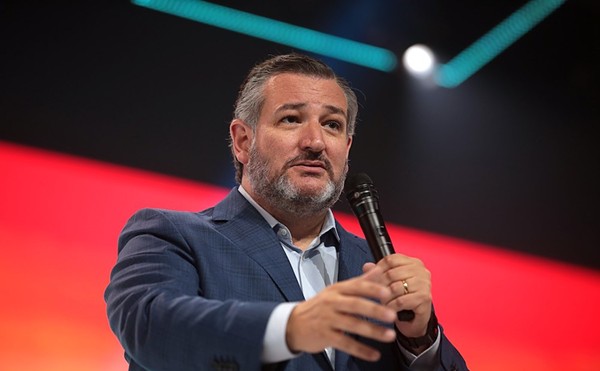After weeks of President Donald Trump demonizing the refugees as criminals and invaders, trying to thrill his base ahead of the November 6 election, we wanted to help these people tell their own stories. We wanted to show what was really happening with this exodus and why. Our video log of the journey is also available online.
Now, as teargas flew across the border into Tijuana last weekend, the United States is faced with humanitarian and existential crises as it decides how to greet these asylum seekers.
(NOTE: The names of the people we interviewed during our trek were changed to protect their identities, and all interviews were conducted in Spanish.)
Members of our crew left the hotel our first evening with the refugees and entered El Estadio Jesus Martinez Palillo, a stadium located in La Ciudad Deportiva Magdalena Mixhuca in Mexico City. Tents, clumped together in mini encampments, lined a narrow street leading to the stadium. The place was still bustling with people.
It was dark, and at the entrance to the stadium stood a table with phone chargers and electricity. Inside, a general assembly in the middle of the sports field was in full swing. A crowd of about 2,500 people gathered around members of the caravan, who took turns at the mic. Hundreds more filled the stadium seats to listen over the PA system.
Men raced past, carrying a woman who needed medical attention, and almost as soon as we walked in, about 1,000 people from another caravan arrived. People already in the stadium excitedly threw water bottles in the air, yelled and clapped to greet the newcomers. In the United States, we’ve talked about “the caravan” as a single entity, but when they travel, it’s essentially multiple caravans, each made up of hundreds or thousands of people traveling north, most of them fleeing from Honduras.
Reporters, photographers and videographers were threaded throughout the stadium, so we felt comfortable getting our gear out, even though we’d just arrived. We climbed the stadium seats to get an aerial view. As we approached the middle of the bleachers away from stairs, people reached down and lifted us over the edge, helping with our bags. Some people slept while others listened to the assembly.
“We are speaking for the women who are pregnant, for the women who are coming with children, for the women who are sick, for the children who are sick too,” one of the male speakers told the crowd.
“How many of you want to go to Tijuana?” another man asked later. The crowd responded with cheers.
We interviewed several refugees. They talked about the rampant violence in Honduras and the lack of work opportunities. Gabriel, a 23-year-old man from Honduras, spoke about the violence his family has endured.
“When I was very little, they killed my mother, my sister and my uncle. There is a lot of crime,” Gabriel said. “Do not look with eyes of hate, of racism. Look at the unity between Central Americans. We are all brothers [and sisters] in this world, and there are no borders.”
The people we interviewed said the United States shared the blame for the destabilization of Honduras.
Javier, a 30-year-old man from that country, talked about how U.S. intervention in Central America has undermined democracy and stability there.
“Everything that happens to the people in this caravan is the fault of Trump, the United States and worldwide groups such as the United Nations and the European Union,” Javier said. “In our most recent election in Honduras, who won the vote? It was Salvador Nasralla, not Juan Orlando Hernandez. All these powerful groups met to give power to Juan Orlando Hernandez and took the vote away from Salvador Nasralla.”
Last year, thousands of Hondurans protested the presidential election results as Nasralla, the projected winner from the Alliance of the Opposition Against the Dictatorship party, reportedly lost after servers crashed three days into the initial count. When servers came back online and counting resumed, the results showed Hernandez – an ally of the United States and a member of the right-wing National Party – ahead. Weeks of recounts ensued, finally giving the election to Hernandez. Riots broke out all over the country. A military curfew was enforced. About 30 people were killed and more than 1,600 arrested.
Not surprisingly, many people doubt the legitimacy of Hernandez’s victory and believe outside forces, like the U.S., which also supported a 2009 coup in Honduras, are responsible.
The refugee crisis didn’t happen in a vacuum. We have to acknowledge that U.S. foreign policies contributed to the destabilization, corruption and violence in Honduras, just as people told us. In the last century, U.S. policies of military intervention, coups, economic neoliberalism and the extraction of resources have undermined both the country’s democracy and stability.
Many individuals, faith groups and international humanitarian organizations worked in the stadium to assist the refugees. Portable toilets and water stations offered people the chance to wash their hands and brush their teeth. There was a medical area, a large tent for women and children to sleep and another for the men.
Still, the long march had clearly taken a toll. People coughed through the night and into the day. We learned a large number of refugees had upper respiratory infections and bronchitis. Lots of people wore medical face masks.
At the assembly, caravan members decided to travel Querétaro, about 135 miles northwest of Mexico City at 5 a.m. the next day. All decisions are made by members of the caravan. They are an autonomous group.
Younger men initially wanted to travel to the Texas border, which is much closer. But, after considering the safety of women and children, who are prioritized in all decisions and travel, the group decided on Tijuana instead. Even though that destination is much further and will take longer, it is safer. The concentration of U.S. military personnel at the entry points along the Texas and Arizona borders, and the presence of right-wing militias and white nationalists, made these states a much riskier choice than California.
We returned to the stadium early the next morning – Friday, November 9 – and were told that after the previous night’s assembly, people deliberated further and decided to stay in Mexico City one additional day.
As the sun rose, mariachis began to play. A long line of people stood outside the stadium waiting to enter a tent area where breakfast was being served – scrambled eggs with ham, black beans and pan. The mariachis played in the middle of the tent and a few people danced.
We left the stadium that morning and returned for the evening assembly. A van full of refugees was parked outside of the stadium. People heckled it. We were told the passengers inside were “self-deporting” – voluntarily returning to Honduras.
Inside the stadium, we took out our equipment to livestream and interview members of the caravan. Men gathered around Matt Hopard, who’d flown in from New York City to join our group. A small group listened as Matt interviewed a man from Honduras. Nobody appeared to be put off by our cameras. Another man asked to speak next.
“It’s a huge corruption crisis. Huge employment crisis... There’s a lot of violence happening there in Honduras,” the man said. “There is no medicine there either. Little opportunity... It’s an exodus of hope.” After the interviews, we walked around the stadium. We peeked inside one of the tents to see where people were sleeping. In another area, children danced and played soccer.
We approached another male refugee, and Matt, once again, interpreted for us.
“He asked where we’re from,” the man replied, “and we said the U.S. And he asked us if we’re going to let them in, and I just said I hope. Espero.”
Matt translated for the livestream: “[He said] we’re all brothers. It doesn’t matter what country you come from.”
At the assembly that night, men came onto the stage and prayed, one holding a Bible, while people in the audience bowed their heads. They were praying for their journey to Quéretaro the following morning. Prayer and faith were central to many people we talked to there.
We asked refugees if they were scared of Trump sending military personnel to the border to meet them.
“No, I’m not scared,” Genaro said as he smiled and shook his head. “The only person I fear is God.
“My message for Americans who do not want us because of our race or the color of our skin is that in this life we are all humans, and that God does not leave this land to anyone,” he added. “This was all created by God. We were created by God and nobody, including Trump, has the right to own this land.”
We wondered if the Mexico City stadium was an anomaly, a publicity stunt by the Mexican government. Friends who traveled to Querétaro after us said there was much less aid for the caravan – the situation there was bleak. And, last week, we received reports from media activists that the conditions are bad in Tijuana, where it’s turned into a humanitarian crisis. Children are eating once a day and baby formula is scarce.
Not that we didn’t witness desperation in Mexico City. Despite the wealth of assistance in the capital, we saw refugees who were tired, hungry and sick. A man asked for pesos to buy shoes. One of the children asked for tortillas when we were on the Metro leaving Mexico City.
The refugee caravan left its Mexico City respite in the early morning of Saturday, November 10. Government officials there started the subways an hour early and gave the refugees free access. Thousands of people navigated the subway system, filled up train cars and took them as far north and west as they could.
The refugees walked half a day to reach Tepotzotlán, where the highway traffic slowed for a toll station and a rendezvous spot with medical support, food and lots of police awaited. Every truck and car passing the toll was asked to ferry passengers to Quertéaro, where another refugee camp had been set up. Even the police stopped vehicles to ask. All day long, people offered up what they could, including food, money and rides. Refugees loaded into trucks, women and children got into cars with their bundles – the remains of their lives in Honduras.
When most of the refugees arrived at the next camp, largely set up by city and state officials with help from the United Nations, they felt they had the energy to push on. So, they continued walking until they reached another stadium further down the road.
Just south of Quertéaro, the refugees were given access to the grounds outside a public stadium, but they weren’t allowed inside. Thousands of people crowded into the space, coveting any spot with protection from the rain that had started to fall. There were plenty of portable restrooms but not much food. Health-care workers from two medical trucks tended to an impossibly long line of sick people. A lot of police officers loomed in the background.
The coliseum walls were tall and fortified. At one point, late in the night, officials closed the only exit gate to the space allotted to the refugees. No one was allowed in or out, and tensions skyrocketed. With the click of a lock, the refugee camp effectively became an open-air prison. Confused crowds piled up on each side of the locked gate. But, after about 20 fraught minutes, officials reopened it.
At this point, the celebration and massive support we saw in Mexico City turned out to be an anomaly. The global media attention also fell off dramatically and quickly. The following night, after leaving the capital, the caravan received only bread. The cement walls it passed echoed with constant coughs. Beyond the exhaustion and hunger, upper respiratory infections and bronchitis were rampant. The wind was cold, and the mood grew nearly hopeless.
Early in the morning, the refugees stirred, packed up and prepared to drudge on. Kids cried during the morning church services. No mariachi bands played. There wasn’t even breakfast.
By the time the sun was fully up, the colosseum was mostly vacant. Strikecorps handed off a bunch of livestream-ready phones and gear to an on-the-ground mutual aid support organization, Pueblo Sin Fronteras, so refugees could document and raise awareness of their situation. We jumped into our rental car, passing lines of stragglers, and headed back to Mexico City.
For the most part, the refugees enthusiastically gave consent for their journey to be documented. They wanted their stories told, to create an understanding of their plights.
However, soon after our arrival in Mexico City, a young English-speaking refugee approached us, shaking his head.
“You just see us as a show,” he said.
We tried to engage him, but he walked away in disgust. We finished our shots, packed up our gear and sat down to reflect.
We “parachuted” in, with expensive photographic gear, documented the suffering of “others,” and now we were flying back to our settled and secure life in San Antonio. The difference in our circumstances couldn’t be starker, and that’s unjust.
This caravan contests the geopolitical conditions created by U.S. foreign policies. Decades of intervention have destabilized Honduras, El Salvador and Guatemala, yet the U.S. is abdicating its role and responsibility as well as any inclination to provide humanitarian solutions. Countries have a legal obligation to render aid to refugees under international law and to allow people to seek asylum. On the other hand, migrants – as the Trump administration classifies the caravans’ members – have no legal standing.
These people are fleeing, not migrating. Their situations are so dire and desperate that they’re willing to travel, mostly by foot, for weeks or months, even to a hostile United States, for a chance at relief. They are refugees, and this is an in-your-fucking-face humanitarian crisis right at our door steps.
Will humanity show up?
Rebecca Centeno is a Mexican-American activist media maker and video journalist. Her work has been featured on Democracy Now!, Free Speech TV, the Washington Post, act.tv, NowThis Politics and Deep Dish TV. In 2015, she co-founded Reels for Radicals, a screening series by Paper Tiger TV and Deep Dish TV, highlighting the work of political filmmakers and creating space for critical dialogue.
Alexei Wood uses many lenses in their photography... anarchist, egalitarian, anticapitalist and antifascist are some of their favorites. Their portfolio is available online at lexshoots.com/RefugeeCaravan.
Together, Centeno and Wood are also admins for Voces Sin Fronteras, a Facebook group that seeks to amplify the voices of asylum seekers traveling across Central America to seek a better life. It’s accessible at facebook.com/vocessinfronteras18.
Stay on top of San Antonio news and views. Sign up for our Weekly Headlines Newsletter.

